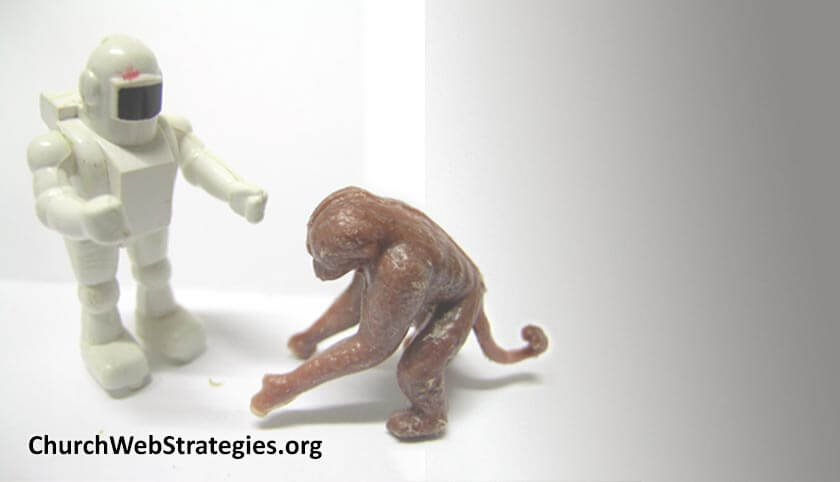Cyborgs are science fiction characters that are primarily human, but have robot parts. They usually have the emotions of a human, but the physical strength and speed of a machine. This is how you need to run your church’s social media campaigns. Some aspects need to show the human emotions of the people in your church. Other aspects are automated by a computer to allow for better productivity. This balance is what your church should strive to achieve.
Social media has two aspects. The social piece is about how people connect. You want to start and sustain real conversations with people. The voice and tone of your church should shine through. The tone that would be most accepted on social media is that of love, mercy, and grace. If condemnation and rebukes are in order, do that face to face. Or at least move it to a private communication channel. The second piece of social media is of course the media. Use a combination of video and images to capture your audience’s attention. Of course you can use audio and text, but visual media garners more engagement. This takes a lot of effort of course. So you will want to automate some aspects of your online ministries.
What To Automate
There are a great many tools that allow you to schedule posts in advance. This is true of website and social media platforms. There are website platform plugins that automatically send out links to social media outlets. Many offer some degree of customization. But most are pretty standard. Standard options include page title and page link. Also, I suggest you use tools like Buffer and Hootsuite to schedule posts in advance. Of course you can customize the message and wording. Yet you need to pay attention to the timing. Several companies have gotten in trouble when automated posts. The problem was that they went out in conjunction with national tragedies.
Smart Automation
I get many automatic responses from people I follow on Twitter. They are typically marketing focused. I followed you on Twitter and your reaction is to send me links to your products? What about getting to know one another. How about trying to see where we can help each other? If you are going to send an automatic response, do not make it a cold attempt to drum up more business. Your church should welcome people, ask where (and what) they are coming from. Also, send a link to your website. But instead of just the homepage, how about the contact page or staff directory. This way they can talk to a real person as soon as possible.
What Not To Automate
When real conversation starts, engage. Your pastor or trained staff should be on social media and respond to comments and replies as soon as possible. An email contact may warrant an auto-response, with a promise to get back to them in X hours. Yet, social media should be more immediate. In most cases, your pastor or staff has apps on mobile devices. Ask them to respond and drive discussion forward in a professional manner. If the medium allows, move the discussion to a private channel. This will encourage more personal conversation.
Action Item
The problem is that automatic posts and responses are easy to pick out. Add some personality whenever possible. If you do automate responses, be sure to direct them to personal contact methods as soon as possible. Emphasize to your church staff to follow up with contacts within a reasonable timeframe. I find that 24 hours is acceptable, but any way you can tighten that is better. Staff that monitors social media platforms should have mobile devices to provide immediate alerts. There should be time to take a break from our digital lives. In those cases, have extra coverage ready to respond. It may seem like a lot of work. But if social media was easy, every church would be doing it right.
This article was inspired by Episode 212 of the Think Digital Podcast from Justin Wise
Photo courtesy of Odan Jaeger

